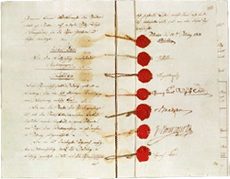
Legal basis / Texts
The international legal scheme governing the use of the Rhine as a navigable waterway goes back to 1804. The Rhine Octroi Convention of 15 August 1804 agreed between the French Empire and the Holy Roman German Empire introduced a unified toll system managed by an international central administration.

The institution continued, in a slightly different legal form, as the Central Commission for Navigation on the Rhine. This was formally created by Appendix 16 B to the Final Document of the Congress of Vienna signed on 9 June 1815 instituting the “Rhine Regulations”. The Central Commission provided the framework for drawing up a supplementary convention, the Mainz Convention, which was signed on 31 March 1831.
This Convention was succeeded by the revised Convention for Navigation on the Rhine of 17 October 1868 (the “Mannheim Convention”) which still today constitutes the legal foundation of the CCNR. The version of the Convention that is currently applicable was the outcome of the Convention of 20 November 1963 (which entered into force on 14 April 1967) and subsequently amended by the adoption of seven Additional Protocols (not all of which have entered into force yet).
This Convention defines the legal scheme governing the use of the Rhine as an inland waterway for navigation and lays down the attributions of the Central Commission. Because of its long history, the scope of the provisions of the Convention can only be understood in the light of the constructive interpretation given to it by its Member States. In this respect, the Mannheim Document is a “living document”, as its implementation continues to evolve according to requirements. A resolution adopted in 2003 (2003-II-10) offers an interpretation of the Mannheim Document.
The following indications are merely a brief presentation of a highly elaborate legal scheme. If more specific information is required, reference should be made to the specialised areas of the site.

